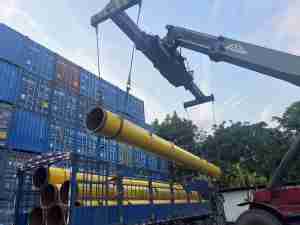Forget Weather - Gas Traders Want to Know About LNG Exports
By: Ryan Collins | Sep 29 2017 at 12:27 PM
Whether it’s hot or cold may be less of an issue for U.S. natural gas traders in the future as the nation exports record amounts of the fuel, according to one analyst.
Demand for cargoes of super-chilled U.S. liquefied natural gas “is going to rival and could surpass weather as a core driver of electricity and natural gas prices in the United States” in the next few years, Andrew Weissman, chief executive officer of EBW AnalyticsGroup in Washington, told a conference in Houston this week.
Cheniere Energy Inc., which shipped its first cargo of LNG last year from its flagship Sabine Pass terminal in Louisiana, has become the biggest U.S. buyer of physical natural gas. It will soon be joined by Dominion Energy Inc., which has won approval to move forward with its own plant.
U.S. developers such as Exelon Corp., Magnolia LNG LLC and Tellurian Inc., are planning to build more than 24 LNG plants in the next decade, Weissman said. At the same time, new projects in countries including Canada, where Petroliam Nasional Bhd. just canceled a project, have almost ground to a halt. That leaves the U.S. as “one of and potentially the lowest-cost source of incremental gas supply,” he said at the Weather & Price Tealeaves IV conference.
Weissman estimates that U.S. LNG production could amount to 12 billion cubic feet a day by 2020. That’s six times the amount of gas that has flowed daily into Sabine Pass, the only exporting facility in America, on average so far this year.
The bulk of the demand growth is coming from Asia, Jack Fusco, Cheniere’s chief executive officer, said in an interview with Bloomberg TV this month. China’s thirst alone for LNG has increased more than 40 percent year-over-year and its recently released electrification plan could drive up demand further.
That said, increased production could end up limiting the amount the power plant-fuel surges on cold winter days, Kyle Cooper, director of commodities research at IAF Advisors in Houston, said by phone Thursday.
“It limits potential upside because you’ve got that fluent supply that could be available immediately given the right price signal,” Cooper said. “Ten years ago, it was not immediately available.”

